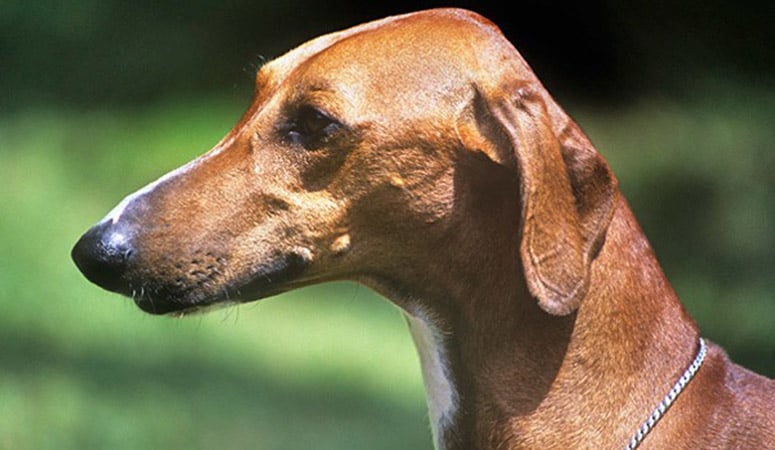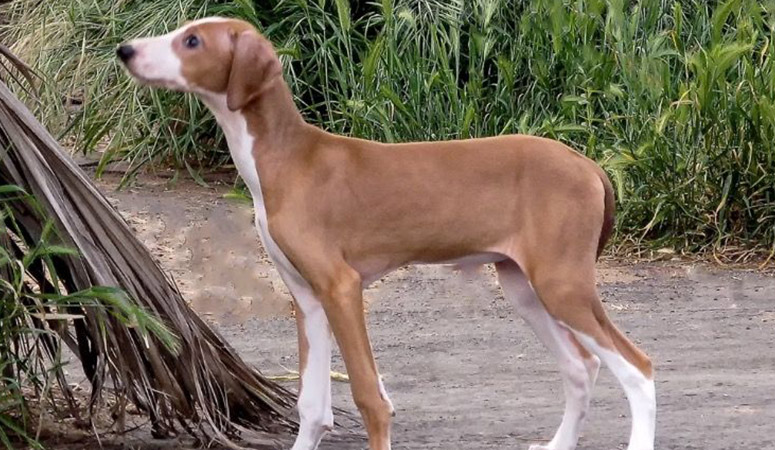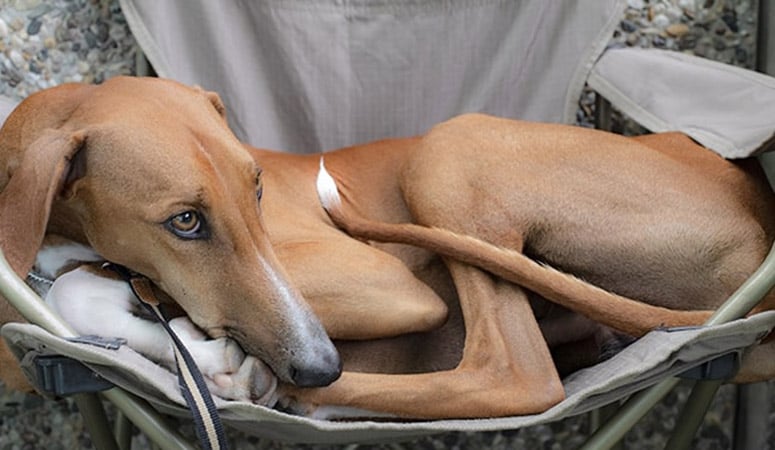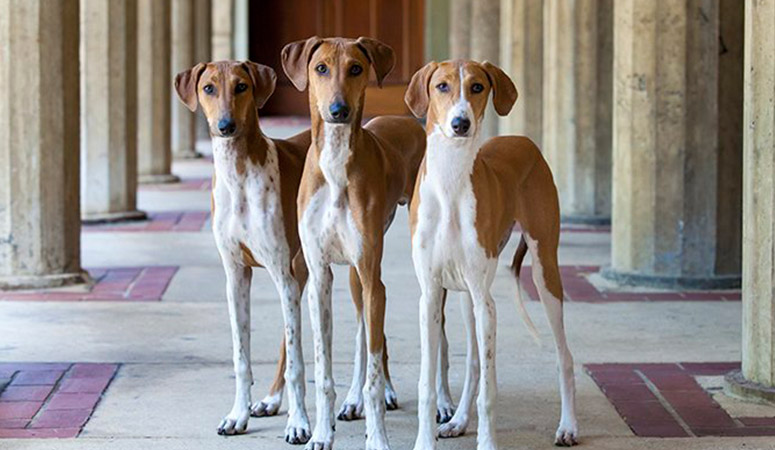Azawakh
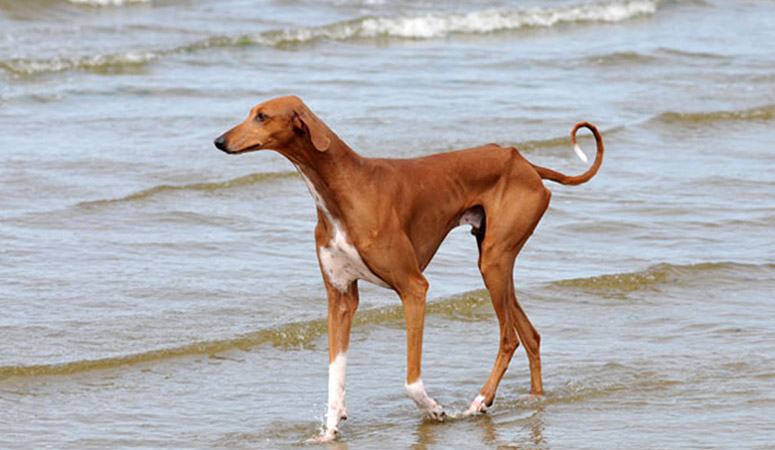
The Azawakh is a lean and swift hunter with a regal presence, originated from West Africa. They were bred as sighthounds with keen vision and blazing speed to fix and chase their prey. The Azawakh excels as a companion, guardian and a lure courser in the United States. Proud but loyal, they are please to protect their home and family.
| Other Names | Idi, Hanshee, Oska, Rawondu, Bareeru, Wulo, Tuareg Sloughi |
| Color | Black, Blue, Brindle, Brown, Cream, Fawn, Gray, Red, Sandy, White |
| Height | Males: 25-29 inches. Females: 23.5-27.5 inches. |
| Weight | Males: 44-55 pounds. Females: 33-44 pounds. |
| Life Span | 12-15 years |
| Personality | Loyal, Independent, Deeply Affectionate |
| Exercise | Regular Exercise |
| Origin |
| Popularity | #190 |
| Groom Needs | Weekly Brushing |
| Kids Friendly | Yes with supervision |
| Dog Friendly | Yes with supervision |
| Watch Dog | |
| Family Dog | Yes |
| Litter Size | 4 to 6 puppies |
Azawakh Pictures
Azawakh Video
Introduction
The Azawakh is an elegant and athletic dog, leggy, and well-muscled. It’s such a fine breed, its lean skin reveals the muscle and bone beneath it. The Azawakh may appear starved to one who doesn’t understand the nature of the breed. It comes in a body that is longer than it is tall, and a head bearing its narrow muzzle. The Azawakh has excelled as a sighthound due to its keen sight and swiftness. The short, fine coat of the breed comes in almost any color combination, although predominant colors include fawn, red, particolored and brindle.
A male dog of the breed normally stands 25-30 inches from shoulder to paw and weighs roughly 45-55 pounds. Females run quite smaller, being 23-28 inches tall at the shoulder and 32-45 pounds heavy. They are loyal to the family and indeed kind and affectionate. The Azawakh has a lifespan of 12-15 years.
Living with Azawakh
The Azawakh has an easy-care coat. A weekly once-over with a soft bristle brush, a rubber grooming mitt or tool, or a hound glove is usually all that’s needed to keep the coat in good condition.
Azawakhs don’t have a doggy odor, so frequent bathing isn’t necessary. Even if the hound does find his way into a mud puddle, a bath may not be required—waiting for the mud to dry and then brushing it away may do the trick. When you do give them a bath, use a mild, hypoallergenic shampoo as they tend to have sensitive skin.
Trim the nails as needed, usually every few weeks as overly long nails are painful and can impede the dog’s gait. Like most sighthounds, Azawakhs are sensitive about having their feet handled. So you should practice from his puppyhood and be sure you never hurt him when you are touching his feet.
Keep the ears clean and dry to prevent bacterial or yeast infections from taking hold.
Brush the teeth frequently with a vet-approved pet toothpaste for good overall health and fresh breath.
The Azawakh is an active breed, requiring daily exercise to keep both mind and body healthy. If they get all the activity they need, they can fit in pretty much anywhere; but if not, he may become bored and destructive.
However, an Azawakh left alone in the yard will not self-exercise. He is more likely to get the activity he needs in the presence of the owner or another dog.
Adult Azawakhs can make great running companions. A daily half-hour play session in a well-fenced field, park, or yard will keep the hound happy and healthy.
But Azawakh puppies should never be given too much exercise because their joints and bones are still growing. They should not be allowed to jump up or off furniture nor should they be allowed to run up and down the stairs, which will put too much pressure on their still growing joints and limbs and cause a dog a few problems later on in their lives.
The Azawakh should do well on a high-quality dog food, whether commercially manufactured or home-prepared with your veterinarian’s supervision and approval. And the amount of your dog diet depends on his size, age, build, metabolism, and activity level.
The quality of dog food you buy also makes a difference — the better the dog food, the further it will go toward nourishing your dog and the less of it you’ll need to shake into your dog’s bowl.
Some dogs are prone to getting overweight, so watch your dog’s calorie consumption and weight level. Treats can be an important aid in training, but giving too many can cause obesity, which can shorten a dog’s life by several years so it’s important to keep an eye on their waistline from the word go.
Clean, fresh water should be available at all times.
Learn about which human foods are safe for dogs, and which are not. Check with your vet if you have any concerns about your dog’s weight or diet.
The Azawakh is a relatively healthy breed with an average life-span of about 12 years. But they sometimes may suffer from some health concerns, such as heart problems, autoimmune mediated thyroiditis, bloat, eosinophilic myositis, hypothyroidism, seizures and skin allergies.
Their deep chests also make them prone to bloat, a disorder in which the stomach and maybe also the spleen twist over and restrict their own blood flow. Symptoms of bloat include pale gums, excessive drooling and pacing.
Not all Azawakhs will get any or all of these diseases, but owners should learn what an Azawakh in good weight and condition looks like if you’re considering this breed.
The Azawakhs’ ears should be checked regularly to remove foreign matter and avoid a buildup of wax. Regular brushing with a toothpaste designed for dogs can help keep the hound’s teeth healthy as well.
Responsible breeders test all breeding stock for conditions that can affect the breed. Regular visits to the vet for checkups and parasite control help to ensure the dog a long, healthy life.
Total Annual Cost: $3239
Cost is estimated for the first year and may vary depending on many factors, such as dog food, health care, leash, collar, licensing, possible fencing, crates, training and obedience classes, dog-walking, grooming, treats, toys, flea, tick, and heart-worm meds, microchips, etc.
With high intelligence and fierce independence, the training needs to be started early. Early socialization and puppy training classes are a must. It should begin with the breeder and continue with the new owner and helps to ensure a well-mannered and well-adjusted dog both at home and in public.
This breed is smart and sensitive, so you’ll get better results by using reward-based positive reinforcement. The Azawakh possesses an amazing amount of dignity and does not respond well to harsh or punishment-based training, which can produce a hound who is either broken in spirit, or aggressive and unmanageable.
Although independent, dominant and strong-willed, this breed can get a bit timid and touchy at times. So you need to be the pack leader at all times. As the dominant pack leader, you must lay down the rules to ensure that they are followed in a consistent and kind manner.
With the right owner, the Azawakh will become an amazing family companion and a champion in the ring.
History
The Azawakh is a relatively unpopular breed of dogs in Europe and America. The history of this breed seems to be wrapped in a glove, and yet eludes many historians. However, some believe that the Azawakh shares similar ancestry with dogs such as the Sloughi and Saluki. Much is yet to be discovered about this breed as it is regarded as a new breed since the knowledge of its temperament and characteristics is as yet, elementary. Owing to lack of evidence regarding the breed’s history, other reports and rumors have begun to attempt to explain its origin. The majority of these sources are of the opinion that the Azawakh originated in sub-Saharan Africa, especially in the Sahel region bordering Mali and Niger. Some of these opinions went further to link the emergence of the Azawakh with a Basenji descent. In any case, what is clear is that the Azawakh is a Pariah type of dog that had probably existed thousands of years ago in West Africa, although it only began to rise to fame.
From time immemorial, the Azawakh had probably existed in West Africa as a pack hunting breed. Some reports claim that they enjoyed certain privileges among the native Tuareg nomads, and in return, they rendered protection to the household and property. They are remarkable for their speed and stamina, running up to 40 meters per hour. The Azawakh was brought into America in the 1980s and has since been struggling to gain popularity. The United Kennel Club recognized it in 1993. Although the American Kennel Club (AKC) accepted the breed into its Foundation Stock Service, as a member of the Hound Group, the Azawakh is yet to be recognized by the AKC.
Helpful Information
Breed Club: AMERICAN AZAWAKH ASSOCIATION
Breed Club Link: http://azawakh.org/
Breed Club Rescue:

